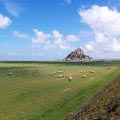
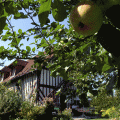
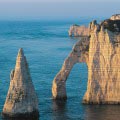

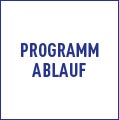
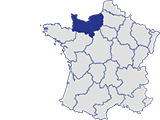
The Region
In most people’s minds, Normandy appears only as a rural idyll with happy cows, but the area lying in the north has much more to offer. The western part is rather rural; a landscape with small fields surrounded by hedges and beech forests. In contrast, north of Rouen, the capital of Normandy, we can find the Côte d’Albâtre with its chalk cliffs. Along this coast we can see splendid beaches, further to the south the famous Mont-St-Michel. Following the inland course of the Seine you will pass by apple farms and timber-framed houses emanating a special calm and charm.
Read More / Weiter Lesen »
Culture & Sights
In terms of culture, Normandy has as much to offer as of landscape. In Caen, for example, there are two large abbeys from the 11th century, built at the time of William the Conqueror. The world-famous tapestry presenting the invasion of England can be seen in Bayeux. In Normandy more recent events can also be traced back, thus at the Côte de Nacre you will be reminded of D-Day in 1944, when the allied armies descended on the coast. One of the most impressive sights in France is the Mont-St-Michel. The former monastery was a centre of learning and science during the Middle Ages. The fortified abbey nearly doubles the height of the hill, connected to link the mainland by a dam only. Another highlight of Normandy is Honfleur, which in the 19th became a centre of artistic activities. Painters like Renoir and Cézanne came to Honfleur for its unique scenery and idyll. Not to forget Rouen and its cathedral, places already admired by Monet.
Cuisine
Apple farms are a familiar aspect in Normandy and their fruits an important ingredient in the cuisine of this region. No ambitious pâtisserie shall avoid serving tartenormande. Most part of the apple crop however is used for the production of cidre and calvados. In Bayeux the pub Le Lion d’Or is to be recommended.
The Country and its People
Hustle and bustle will not often be found in Normandy, more value being placed on calm and inner balance. This is also reflected by the Norman cows quietly grazing on the pastures.







